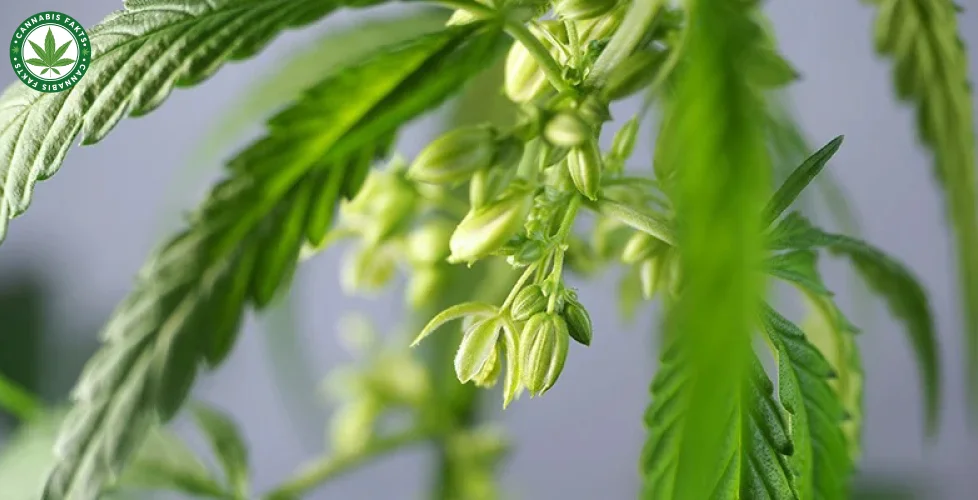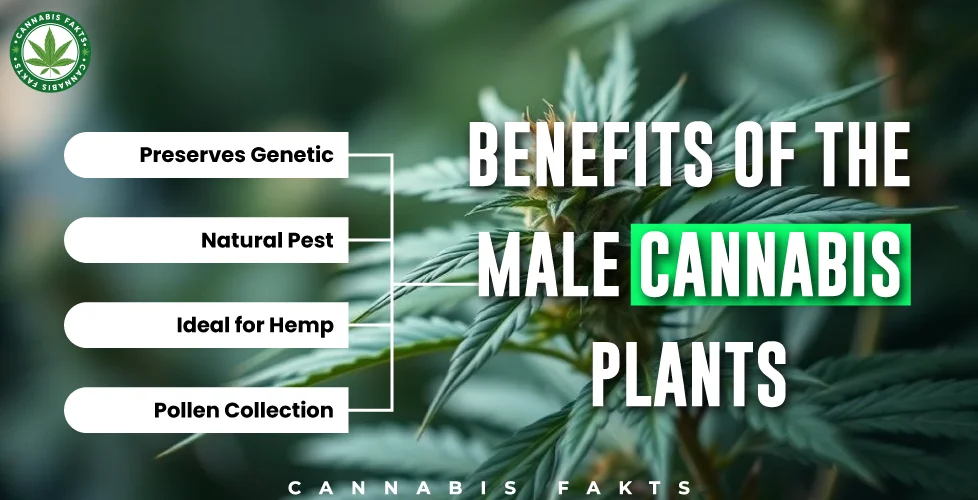
Growing Male Cannabis Plants can be one of the most rewarding experiences for both novice and experienced cultivators. But if your goal is to harvest potent buds, then distinguishing male from female cannabis plants early in the growth cycle is absolutely crucial. Male plants don’t produce the rich, cannabinoid-dense flowers that most growers seek in fact, they can ruin an entire crop by pollinating female plants, leading to seedy, low-quality buds.
In this guide, we’ll show you how to identify a Male Cannabis Plant early, why it’s important, and what you can do once you’ve identified one.
What Is Cannabis?
Cannabis is a plant genus in the family Cannabaceae. It is most commonly known for its psychoactive and medicinal properties. People also refer to it by names like marijuana, weed, ganja, pot, and others.There are three main species of the cannabis plant:
- Cannabis sativa
- Cannabis indica
- Cannabis ruderalis
Main Uses of Cannabis
Exploring the Key Medical, Recreational, and Industrial Applications of Cannabis
1. Recreational Use
Cannabis is often used for its mind-altering (psychoactive) effects. The primary psychoactive compound is THC (tetrahydrocannabinol), which produces the “high.”
2. Medical Use
Cannabis is widely used to relieve:
- Pain
- Anxiety
- Nausea (especially from chemotherapy)
- Seizures
- Muscle spasms
3. CBD in Medical Strains
Medical strains often contain CBD (cannabidiol), a non-psychoactive compound known for its therapeutic benefits.
4. Industrial Use (Hemp)
The hemp variety of cannabis contains very low THC. It’s used to make:
- Rope and textiles
- Bioplastics
- Building materials
- Health foods (hemp seeds and oils)
Read More: How Effective is Cannabis for Pain in Elderly Individuals?
What is a Male Cannabis Plants?

A male cannabis plant is the pollen-producing partner in the cannabis life cycle. It doesn’t develop the resinous buds that female plants do. Instead, it grows pollen sacs that open up to release pollen into the air. This pollen then seeks out receptive female flowers.
While male plants are not completely useless (they are important for breeding purposes), they are usually removed from grow rooms focused on producing consumable cannabis.
How to Identify a Male Cannabis Plants
You can spot male plants in the pre-flowering stage, around 3–6 weeks after germination:
- Look at the nodes (where branches meet the stem).
- Male plants grow small round balls these are pollen sacs.
- Female plants grow calyxes with white hair-like pistils.
Male plants do NOT grow buds. They grow taller, are less bushy, and have thicker stems to support pollen sacs.
Uses of Male Cannabis Plants
- Genetic Contributors – Essential for breeding, males pass on traits like mold resistance, faster flowering, and enhanced terpene profiles.
- Fiber Producers – Male hemp yields soft, silky fibers ideal for eco-friendly textiles and fine paper.
- Controlled Pollinators – Used strategically, they enable seed production in selected female plants for future cultivation.
- Natural Compost – After use, their biomass enriches soil with organic nutrients for future grow cycles.
- Research Assets – Vital in labs for studying plant genetics, disease resistance, and cannabinoid development.
Benefits of the Male Cannabis Plants

Exploring the Hidden Benefits of Male Cannabis Plants: Beyond Pollination
1. Essential for Breeding New Strains
Male cannabis plants provide half of the genetic material needed to create seeds. They are crucial for developing new, stable, and unique cannabis strains with specific traits like potency, flavor, or resistance to pests.
2. Preserves Genetic Diversity
In both wild and cultivated environments, male plants help maintain a diverse gene pool. This diversity is key to the long-term health and adaptability of cannabis species.
3. Ideal for Hemp Fiber Production
Male cannabis plants produce longer, softer fibers compared to females, making them particularly valuable in industrial hemp for textiles, rope, paper, and biodegradable materials.
4. Pollen Collection for Controlled Breeding
Growers can collect and store pollen from strong male plants to selectively fertilize female plants later. This method ensures precise genetic crosses without growing the male plant alongside females.
5. Natural Pest and Disease Resistance Traits
Certain male plants exhibit strong natural defenses against pests, mold, and environmental stress. These traits can be passed on to future generations, helping breeders develop more resilient cannabis varieties.
Read More: The Benefits of Sugar Free Cannabis Gummies for a Healthier Lifestyle
The Role of the Male Cannabis Plants in Nature
In natural settings, male cannabis plants play a vital role in reproduction. Their primary function is to produce pollen, which fertilizes the female cannabis plants, leading to seed production. These seeds carry the genetic legacy of both parent plants, which is essential for:
- Genetic diversity
- Breeding new strains
- Sustaining wild cannabis populations
Although male plants are not known for producing THC-rich flowers, their contribution to the plant’s evolutionary cycle cannot be overstated.
Why the Male Cannabis Plant Matters
Exploring the essential role of male cannabis plants in genetics, breeding, and cultivation.
1. Breeding and Genetics
Without male cannabis plants, there would be no way to breed new strains. Whether growers are developing high-THC cultivars or crossing different genetics for enhanced flavors or pest resistance, the male plant provides half of the genetic code.
2. Preserving Strain Purity
For professional breeders, selecting a strong, healthy male plant is just as critical as choosing a robust female. Males contribute traits like:
- Growth vigor
- Pest and mold resistance
- Flowering time
- Terpene profile (to a degree)
Controlled breeding allows cultivators to pass on these desirable characteristics to the next generation.
3. Industrial Hemp Production
Industrial hemp is usually cultivated for fiber, seed, or CBD, depending on the plant’s sex and intended use. In fiber production, male cannabis plants are favored for their:
- Longer stalks
- Less woody material
- Earlier maturity
Their lightweight, fibrous build makes them ideal for textiles, paper, and biodegradable plastics.
Read More: The Best Cannabis Salve Recipes for Arthritis Relief
4. Pollen Collection for Future Breeding
Experienced breeders may harvest and store pollen from select male plants. Properly collected pollen can be frozen and used later to pollinate females intentionally. This method enables planned genetic crosses without the need to keep the male plant alive indefinitely.
Pros and Cons
Like everything else, this comes with its own set of pros and cons.
Pros:
- Vital for Breeding – Contribute essential genetics to develop new strains.
- Stronger Hemp Fibers – Ideal for industrial use like textiles and rope.
- Pollen for Seed Production – Necessary to create cannabis seeds for cultivation.
Cons:
- Low THC Content – Not suitable for smoking or strong medicinal effects.
- Can Ruin Female Crops – Pollination leads to seedy buds with lower potency.
- Limited Use in Consumption – Offers minimal value for recreational users.
Should You Keep or Remove Male Cannabis Plants?
For most casual or commercial growers interested in bud production, male plants are often seen as undesirable because they can pollinate females, leading to seeded buds. Seeded cannabis is lower in THC concentration and generally less desirable to consumers.
When to Remove Male Plants
- If you’re growing for consumption and don’t want seeds
- If you cannot isolate males in a separate area
- If you’re cultivating in a small indoor grow space
- If you’re unsure about the plant’s genetics
When to Keep Male Plants
- If you’re breeding your own strains
- If you’re conducting phenotype selection
- If you’re producing hemp or fiber-based cannabis
- If you want to experiment with pollen collection
Read More: How to Make Cannabis-Infused Elderberry Gummies at Home
Male Cannabis Plants Guide
Here’s a quick reference guide highlighting key facts about male cannabis plants:
| Aspect | Details |
| Identification | Develops pollen sacs instead of pistils; usually appear within 2–3 weeks. |
| Purpose | Primarily used for breeding and genetic preservation. |
| THC Content | Significantly lower than female plants; not ideal for consumption. |
| Risks to Females | Can pollinate female plants, leading to seed production and reduced yields. |
| Usage Options | Can be used for breeding, making hemp fibers, or extracting terpenes. |
What Happens If You Smoke Male Cannabis Plants?

Male cannabis plants contain very low levels of cannabinoids like THC and CBD compared to females. Their pollen sacs, leaves, and stems do have trace amounts of cannabinoids, but nothing close to the resin-packed buds of a female plant.
If you smoke male plant material, you might notice:
- Mild to no psychoactive effects due to low THC content
- A harsh smoke with an unpleasant taste
- Potential coughing or throat irritation
- Little to no medicinal benefit
In short, you’re likely to get more discomfort than satisfaction from smoking male cannabis.
Read More: CBD Vape Pens for Anxiety: Effects, Benefits & Dosage Guide
FAQs About Male Cannabis Plants
Frequently Asked Questions About Male Cannabis Plants: Everything You Need to Know
1. How can I identify a male cannabis plants?
Male plants typically develop small pollen sacs that look like tiny balls or clusters near the nodes, whereas female plants grow hair-like structures.
2. Are male cannabis plants useful for anything?
Yes, they’re essential for breeding new strains, producing seeds, and can also be used for hemp fiber or terpene extraction.
3. Should I remove male plants from my grow space?
If you’re cultivating for flower production, it’s recommended to remove them to prevent pollination and seed formation in your crop.
4. Do male cannabis plants contain THC?
They contain THC, but in much lower amounts than female plants, making them unsuitable for typical recreational or medicinal use.
5. Can male plants affect the quality of my crop?
Yes, if left with females, they can trigger seed production, which reduces the overall potency and quality of the harvest.
Final Thoughts:
While often overlooked by casual growers, male cannabis plants play a vital role in the cultivation ecosystem. From breeding new strains to contributing to genetic diversity, they serve purposes far beyond simple flower production. However, for those focused on high-potency harvests, identifying and managing male plants early is crucial to prevent unwanted pollination. Understanding their characteristics and potential uses allows cultivators to make informed decisions based on their goals whether that’s breeding, harvesting, or experimenting with natural compounds.



